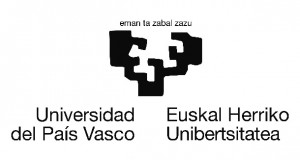Designing new chemical compounds is one of the most ambitious goals of every chemist. Nonetheless, efforts made for the understanding of the chemistry of new chemical compounds often yield new paradigms which open unexpected research areas. All-metal aromatic molecules, recently synthesized by Li et al, constitute one such an example. Indeed, rationalizing the unexpected large resonance energy of Al4(2-) has yield the concept of multiple-fold aromaticity, as that present in molecules that posses more than one independent delocalized bonding system, either σ-type or π-type, each of them satisfying the 4n+2 electron counting rule of aromaticity.
This new concept should help understanding the “simultaneously” contributions to aromaticity within the same molecular structure, as arising from various delocalized bonding systems of the molecule and, it should be of general applicability, irrespective of whether the molecule is organic or inorganic
The all-metal aromatic Al4(2-) molecule, therefore, is the first of the series of recently synthesized compounds that constitute a new paradigm in chemistry. These compounds present similar properties to Al42-, namely, high magnetic shielding, large ring current, similar derived antiaromatic structures and large resonance energies.
These molecules are normally prepared as singly charged anions since double charged species are expected to be rather unstable in the gas phase due to large intramolecular Coulomb repulsion. Thus, complexation with counterions is required to produce more stable species and, also convenient for mass analysis and photodetachment experiments. However, as recently putted forward by Kuznetsov et al. ” …the question remains if the X42- aromatic rings can be incorporated into sandwich-type complexes…”, but, as far as we know, no sandwich-type complexes of these molecules have been reported up to date.
We have focused on this idea, and have been able to calculate stable sandwich-type structures which have a similar structure as metallocenes. The Al4TiAl42- has two aromatic -2 charged squares (analogous to the cyclopentadienyls in the metallocenes) and a +2 charged titanium on the center of the system.
Recent publications on the field:
- Jose M. Mercero, Mario Piris, Jon M. Matxain, Xabier Lopez, Jesus M. Ugalde, “Sandwich Complexes of the Metalloaromatic “, Journal of the American Chemical Society, vol.131, iss.20, p.6949-6951, (2009) . DOI: 10.1021/ja8095043
- Jose M. Mercero, Elena Formoso, Jon M. Matxain, Leif A. Eriksson, Jesus M. Ugalde, “Sandwich Complexes Based on the All-Metal Al42 Aromatic Ring“, Chemistry – A European Journal, vol.12, iss.17, p.4495-4502, (2006) . DOI: 10.1002/chem.200600106
- Alireza Haghiri Ilkhechi, Jose M. Mercero, Iaki Silanes, Michael Bolte, Matthias Scheibitz, Hans-Wolfram Lerner, Jesus M. Ugalde, Matthias Wagner, “A Joint Experimental and Theoretical Study of Cation Interactions: Multiple-Decker Sandwich Complexes of Ferrocene with Alkali Metal Ions (Li“, Journal of the American Chemical Society, vol.127, iss.30, p.10656-10666, (2005) . DOI: 10.1021/ja051544%2B
- Jose M. Mercero, Jon M. Matxain, Jesus M. Ugalde, “Mono- and Multidecker Sandwich-Like Complexes of the Tetraazacyclobutadiene Aromatic Ring“, Angewandte Chemie International Edition, vol.43, iss.41, p.5485-5488, (2004) . DOI: 10.1002/anie.200460498
- Jose M. Mercero, Jesus M. Ugalde, “Sandwich-Like Complexes Based on All-Metal (Al“, Journal of the American Chemical Society, vol.126, iss.11, p.3380-3381, (2004) . DOI: 10.1021/ja039074b


